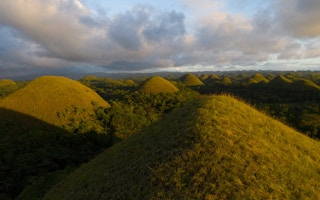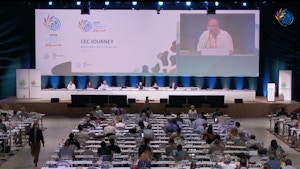Bohol, a province in the Philippines’ Central Visayas region known for its spectacular beaches and emerging destinations, has become one of the country’s top tourist draws in the past five years.
The province, which comprises Bohol Island and numerous surrounding islets, saw its visitor arrivals spike to a record high of over 1.5 million in 2019, as it introduced its new international airport, a revamped seaport, and an ambitious drive to promote itself as an eco-cultural hub.
But as the Covid-19 virus put major cities in the country on lockdown in March, tourist arrivals fell by 40 per cent in the first quarter of this year, quickly dampening Bohol’s meteoric rise as one of the country’s most popular vacation spots.
In the first few months of the lockdown, however, Bohol was able to contain the outbreak, prompting the provincial government to consider opening borders to nationals of countries with low to zero coronavirus cases, if only to keep its economy afloat.
Taking its cue from a policy proposed by the department of tourism, the provincial government started studying how it could create a “travel bubble”, which would allow visitors to fly directly to tourist hotspots with international airports in the country. Travel bubbles could be for business only or also include leisure travel. The policy specifies provisions on health protocols that need to be followed when leaving and entering the territory, with access being either reciprocal or only inbound.
“
The fact that the travel bubbles could be established on specific islands gives the Philippines the advantage to provide access to the islands that can be thoroughly controlled to avoid any infection.
Matthias Helble, economist of the economic research and regional cooperation department, Asian Development Bank
The Philippines, being an archipelago of 7,641 islands, is an ideal place to implement travel bubbles, said economist Matthias Helble of the Asian Development Bank’s economic research and regional cooperation department.
“In the Philippines, one could imagine setting up travel bubbles between specific islands and a foreign partner, like Boracay and the Republic of Korea,” Helble told Eco-Business. “The fact that the travel bubbles could be established on specific islands gives the Philippines the advantage to provide access to the islands that can be thoroughly controlled to avoid any infection.”
Travel bubbles currently exist in Asia but are restricted to business travel. China and Korea established the first travel bubble in the region on 1 May, while an arrangement between Singapore, Malaysia and Brunei is in the works. Australia and New Zealand were in talks to create one, but the ongoing second wave of the coronavirus in Australia has pushed back negotiations until the end of the year.
The Philippines is having its own surge of new coronavirus cases. Starting 4 August, President Rodrigo Duterte agreed to reinstate another lockdown in the main island of Luzon, which includes Metro Manila, after medical groups warned the health care system was being overwhelmed by Covid-19 patients. More than 140,000 people have been infected, including about 2,100 who have died, as of 12 August.
Despite the onset of fresh cases, Helble said travel bubbles remain an “attractive option” for the Philippines when the outbreak subsides.
“Post-pandemic tourism will be marked by less mass tourism and a trend away from crowded cities. [In the first place], the Philippines has traditionally attracted fewer tourists to its cities and more to its islands,” said Helble.
However, the ADB official warned that travel bubbles can only be an “interim solution” before a Covid-19 vaccine is at hand. Once a vaccine is widely available, there is no reason to continue with travel bubbles, as they “discriminate against tourists from excluded source countries”.
In order for travel bubbles to work, stringent health protocols need to be in place, including extensive testing, which the Philippines is leading in the region, he added.
As of 5 August, the country ranked first among seven countries that conducted the most number of Covid-19 tests in Asia, according to the government’s Covid-19 testing chief Vince Dizon. In a webinar, Dizon said the country has increased its daily number of tests conducted to more than 30,000, doubling Japan’s figures of 15,115 tests as of end-July. Other Asian countries such as Indonesia performed 12,777 tests, South Korea had 7,957 tests, and Malaysia conducted 6,494 tests per day as of the same date. Singapore recorded 6,402 tests based on July 27 data while Vietnam conducted 10,906 tests daily from March to April.
Sustainable tourism: ‘Over and beyond’ what the government requires
Investing in healthcare systems in the country’s vacation spots must be central to tourism planning during the Covid era, said Renzo Guinto, chief medical doctor and founder of Filipino non-governmental health and environment organisation PH Lab.
Guinto said that famous tourist spots in the country are usually located in places with limited healthcare infrastructure. He cited cases where tourists get into serious medical problems that require them to be airlifted to Metro Manila because the nearest hospital does not have the appropriate facilities.
“Now that Covid-19 drives tourists to think about their health and safety first, tourist spots must listen to these future customers,” Guinto told Eco-Business. “Tourist places must do over and beyond what is required by the guidelines of the department of tourism. This includes investing in infection control facilities such as widespread availability of disinfectants, improvement of ventilation, and redesign of spaces to allow greater social distancing.”
Guinto, who graduated with a doctorate in public health from Harvard University, said tourism business owners can partner with local governments to strengthen the capacity and performance of primary healthcare facilities and community hospitals.
“
Now that Covid-19 drives tourists to think about their health and safety first, tourist spots must listen to these future customers. Tourist places must do over and beyond what is required by the guidelines of the department of tourism.
Renzo Guinto, chief medical doctor and founder, PH Lab
These partnerships can ensure that the local health system has adequate human resources, steady supply of medicines, and available medical equipment such as X-rays and even CT scans for urgent diagnosis and management as well as be able to utilise innovative and science-informed technologies for contact tracing and testing, he added.
“Such investments in healthcare facilities must be seen as win-win for both reinvigorating tourism and will also benefit the residents as well,” he said.





















